Climbing in the Alps is usually very convenient. The mountains are relatively accessible, the facilities are good, and the climbs can be short but very rewarding. It is the same also for the Mont Blanc, the highest peak in western Europe. Climbing Mont Blanc is a dream come true. The excitement is so high, reaching this point of time, of being on the flight towards the “white lady”.
Yes, the summits are not even close to the heights in the Himalayas for example. But, you can find any level of mountaineering experience in the Alps. You can go guided or independently.
In this case, “Mont Blanc Guides” are our hosts. Mont Blanc guides only focus is solely on taking you there, to the summit of the Mont Blanc.
Most climbers try to summit through non-technical routes. For the experienced climber, there are more difficult and technical routes to choose from.
Although relatively short, climbing the Mont Blanc is far from being easy.
Depends on the chosen route and sections, you will probably need to climb 1600meters vertically in the summit day. Then, you will be rewarded with 360 degrees views at an altitude of 4808 meters.
The climb is surely much harder than climbing the Kilimanjaro (5885 meters heigh). It is also harder than climbing Aconcagua (6995 meters). It is different from climbing in Nepal for example. This is a much shorter experience, lower in altitude hence fewer oxygen issues and less a need for acclimatization. Island Peak climb, or Lobuche peak climb, for example, take around 2 weeks each, they are higher than 6000 meters and, you need more time to acclimatize.
Mountaineering experience is not a must for the standard route, but a high level of endurance fitness is. So, be ready. Test yourself for long vertical hiking/climbing with a load of a backpack. 10km in 50 minutes is also a kind of a test you should do to check you are qualified for such a climb.
One should not underestimate the mountain even on the standard route. It is a dangerous mountain, with a risk of rock falls, apart from the other dangerous factors like snowfall, altitude sickness, cracks in the glaciers (crevasses) and more.
Climbers don’t need a special permit and you can book independently for the huts on the mountains. If you are not an experienced climber and not so familiar with the routes and what it takes, it is surely better to have a guided climb. Different programs offer different approaches for acclimatization and readiness check. Mont Blanc Guides use the Gran Paradiso in Italy as your readiness check and acclimatization. If you are climbing well enough the 4061 meters beautiful peak in Italy, you are in better chances to successfully summit the Mont Blanc.
For the Gran Paradiso, you will need 2 nights in the hut. Hiking to the hut, sleeping for a short night, waking up before sunrize, climbing up to the summit, getting down to the hut. sleeping another night and going down to your city of the exit point. Climbing the Mont Blanc also takes 2 nights in general. Hiking to one of the huts ( usually the Tête Rousse hut at an altitude of 3167 meters and not the highest one, Refuge du Goûter , at an altitude of 3815meters), sleeping a short night, early wake-up, climbing to the summit, going down to the chosen hut for sleeping and going down to Chamonix early the day after.
In order to climb the Mont Blanc, there is a need for the basic climbing gear. As it is not a technical climb, you or your guide will not need to use special rope techniques, to use ice screw (the guide might carry for safety and rescue but they are not in use in a normal climb.
You will need to have a simple ice-ax, steel crampons for snow and ice walk, trekking poles, helmet for the rocky or slippery parts, a rope (which your guide will carry unless you climb independently) and, a headlamp.
The boots should be suitable for crampons use and should be warm enough but not too bulky. A good example is La Sportive Nepal Extreme or Evo.
You will need to have 2 layers of gloves, basic warm gloves and heavier climbing gloves that suitable for -10c degrees comfortably. Don’t underestimate the cold and the fact that it is a relatively short climb will not help if hands are too cold to function and you will suffer, not mentioning the hazards.
Clothes should be layers. basic layer, fleece layer, windshield layer, and a waterproof layer. For both upper body and legs. There are several options but the idea is to carry less while having the versatility of changing and layering, avoiding soaking from sweat and keep yourself warm enough fast.
The backpack should be around 50l type. Better to have those who are more suitable for climbing, light with not many pockets and options, just the minimum to hook your poles and ice-ax. Helmet or water-bottle can be inside or outside, depends on the size and the hooking options. You can also manage with trekking backpack that is larger (like the one I used, 70l ) but it is surely big and less comfortable.
All the gear is easily found in Chamonix and in this case, The Mont Blanc Guides also have the option to easily rent crampons, ice-ax, and boots that fit this type of climbing.
We meet at the chalet in Chamonix, a group of six enthusiastic climbers. Sitting for a welcome dinner in the chalet. Gathered from across the globe. Each participant with some background of mountaineering and a big bucket of excitement and anticipation. In the morning we meet the full crew of guides, getting the whole technical introduction, going through all the equipment, hiring in the chalet of the Mont Blanc Guides some missing equipment and buying from stores remaining required items. The process is well organized and after a couple of hours, we headed to the Italian alps for the starting point for the Gran Paradiso mountain.
The hike up the mountain is a short 3 hours hike overlooking the valley in one side and the mountains and snowy peak on the other side.
The hut is located in a beautiful viewpoint and we have the time to rest and mingle and to discuss the upcoming climb early in the morning.
Dinner is served and the evening is pleasantly passing before the early bedtime.



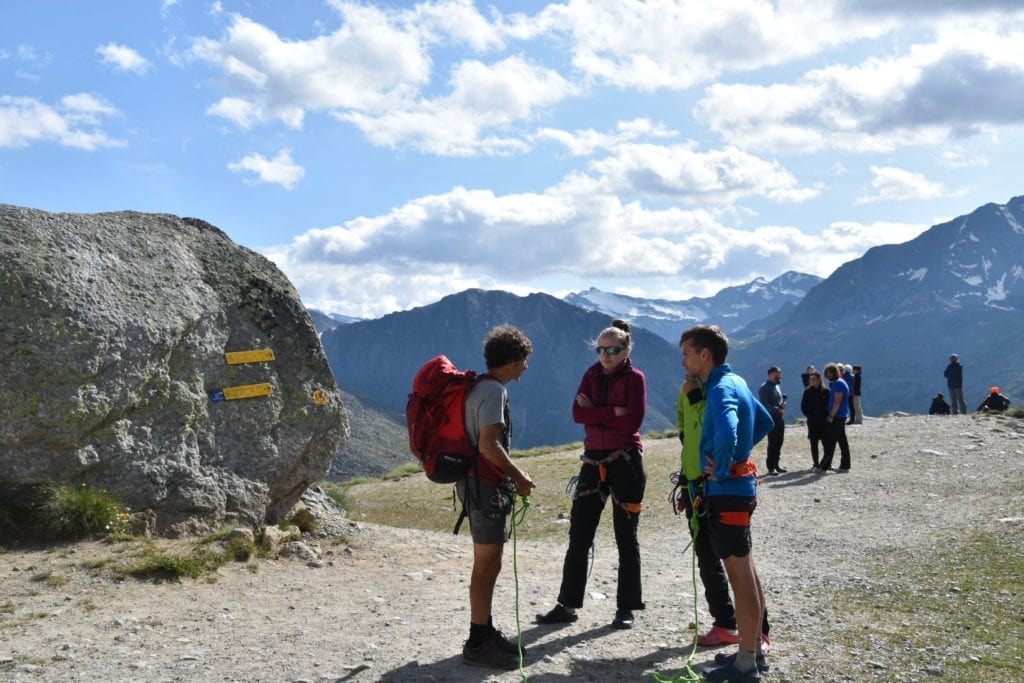
We woke up at 4 am, having fast breakfast with warming tea, putting boots on, crampons are ready for snow point and we started our hike up from the hut to the snow level. At the start it was dark but sunrize is just around the corner. The weather is not the best one to choose, it is windy and cold and we suffer from frozen fingers.


After a couple of hours more, we reached the summit ridge and all is left for the mission to be accomplished is to climb the short but sharp frightening rock. The views are just a pearl in the mountains.
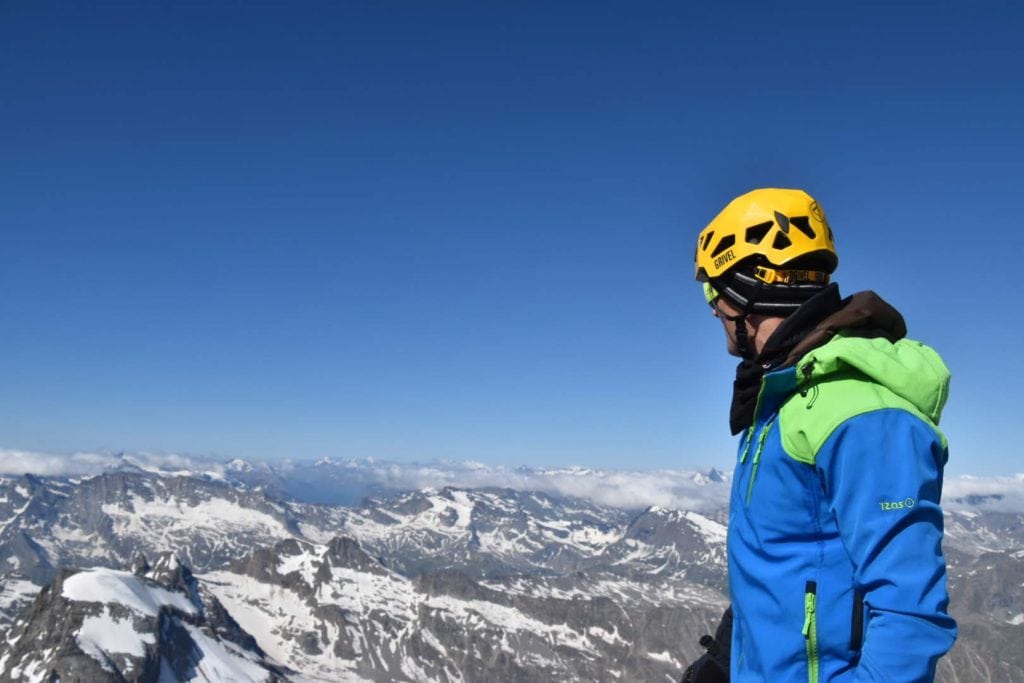



The way down also takes some time and is not easy for the legs. After two and a half hours of descending, we are back to the hut.
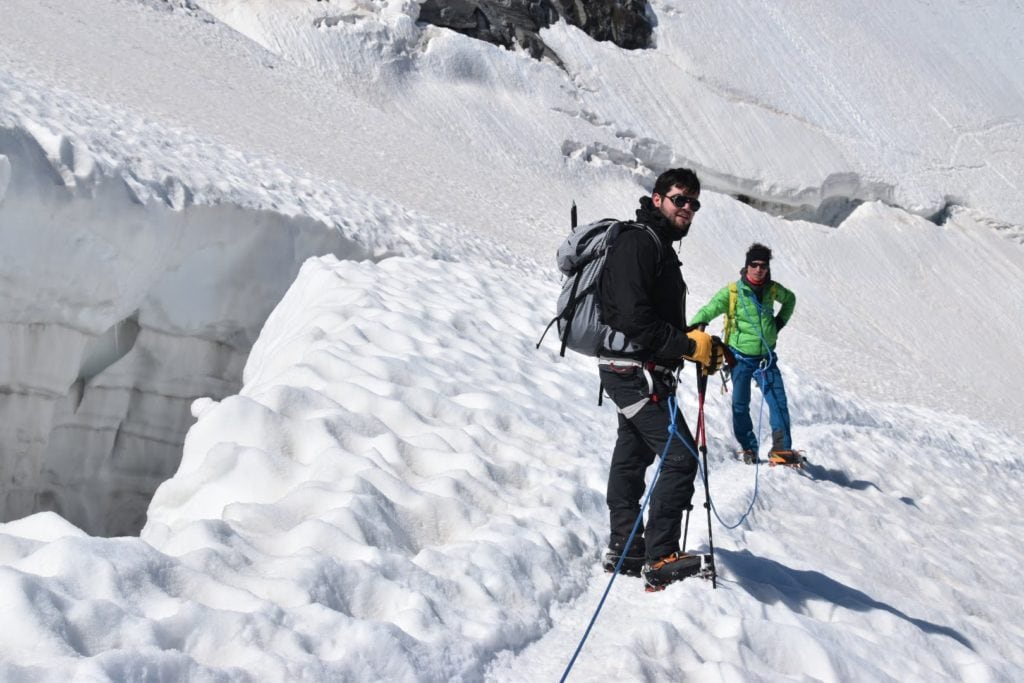

We spent the afternoon resting and drying our soaked clothes, eating, joking and drinking beers and grappa.
On Monday morning we are leaving the hut and descending back to the start of the trail. From there, driving to Chamonix to rest and, to get prepared to the real challenge. Unfortunately, one of the team members didn’t accomplish the challenge of the Gran Paradiso. Therefore, he will not proceed with the rest of the team for the Mont Blanc climb itself.
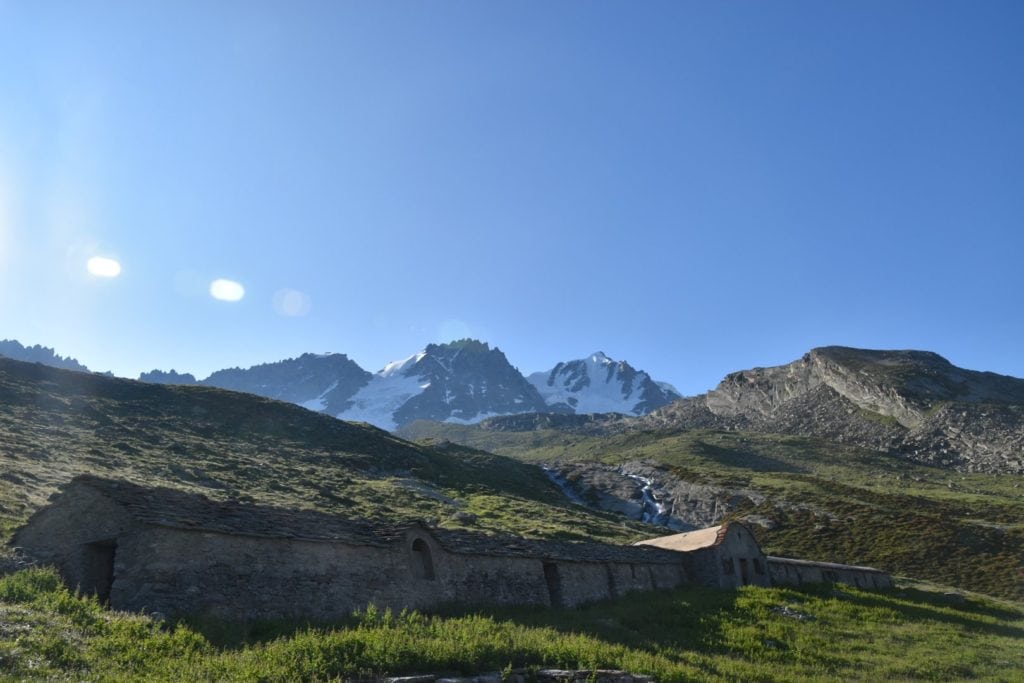
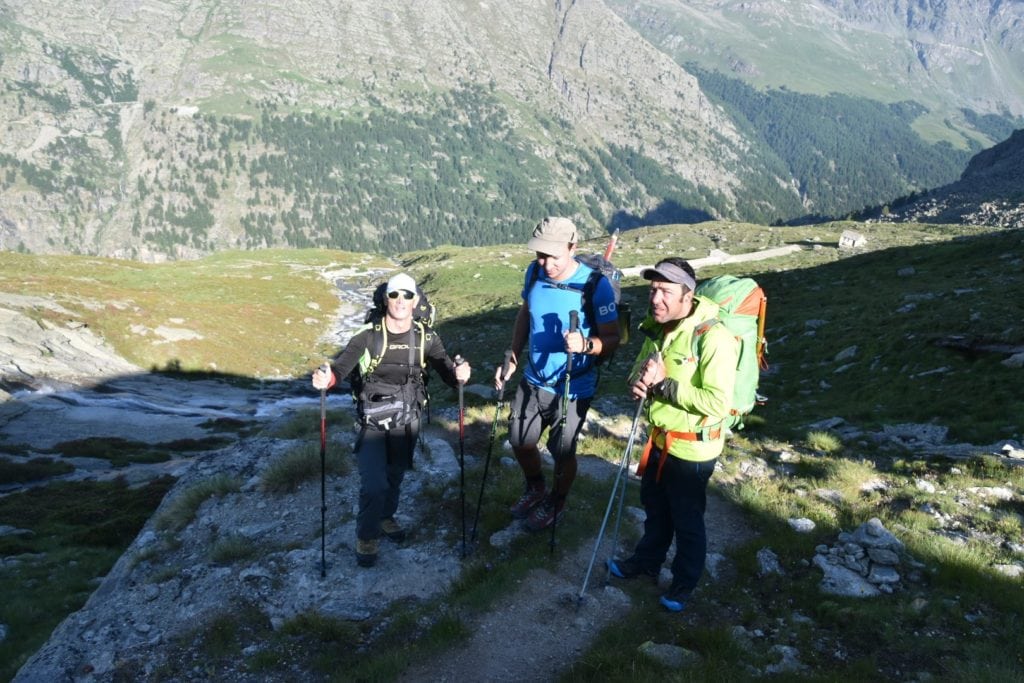
In the morning we leave the chalet and heading to the cable car. From the Cable car, we take the Mont Blanc train, to reach the starting point of the Mont Blanc.



Today, our hike up the mountain is relatively short. We hike up to the first hut, Tête Rousse, at an altitude of 3167 meters. So, after around 3 hours of hiking and kind of bad weather, we are at the hut. The views are magnificent and many photos are taken, to capture this rewarding moment.

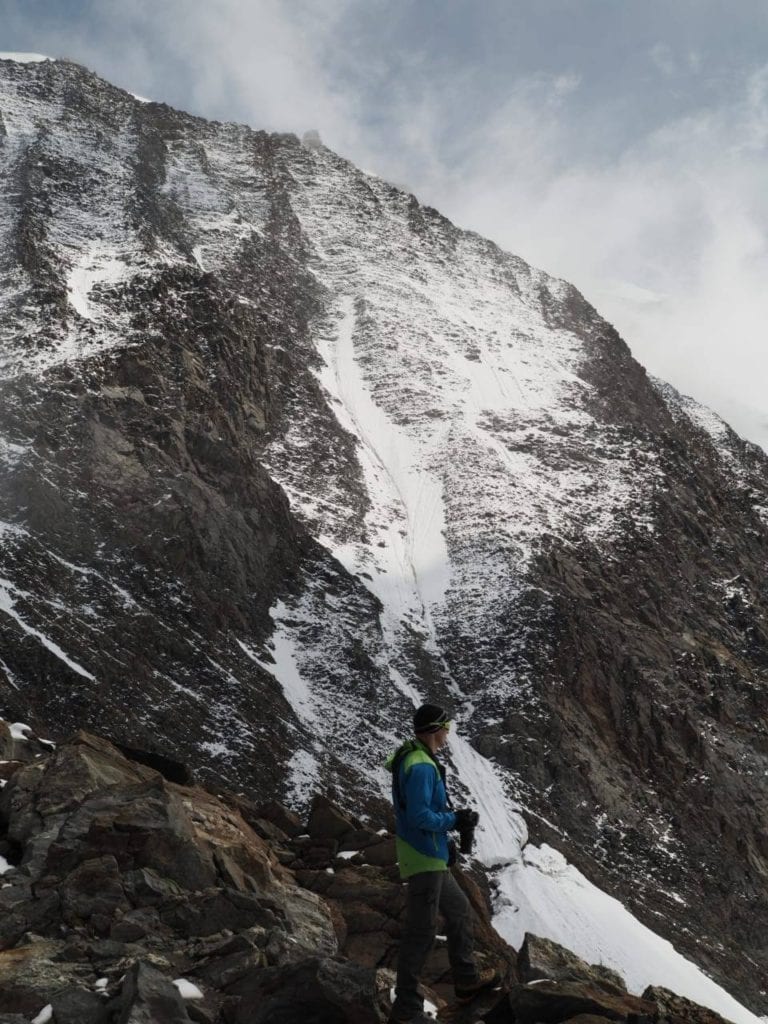


Waking up just before 4 am, again, to start the ascent to the top of the Mont Blanc. The “wall” is a rocky part you have to climb up (and down for the way back). A bit after the start, there is a slippery ice part that is crossing the falling rocks high- way. This is one of the deadliest points on the mountains. You have to cross it carefully fast!
The climb up with the crampons on your boots and the ice-ax is challenging. The legs suffer and the hands feel the cold. Fortunately, the weather for us today is really good and help us to stay motivated and focused on the walk.
After passing the “dome” there is a feeling that the walk is a bit easier. We are getting closer to the summit. Step by step, climbing up the snow ridge, till we reach the top of the white lady!
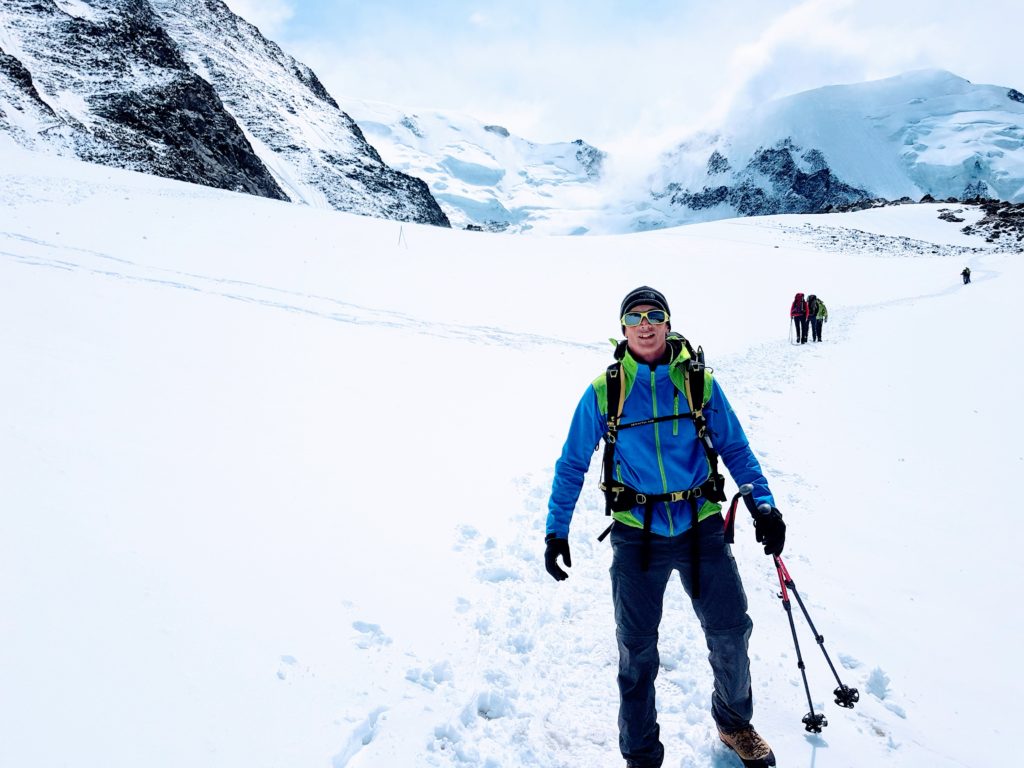
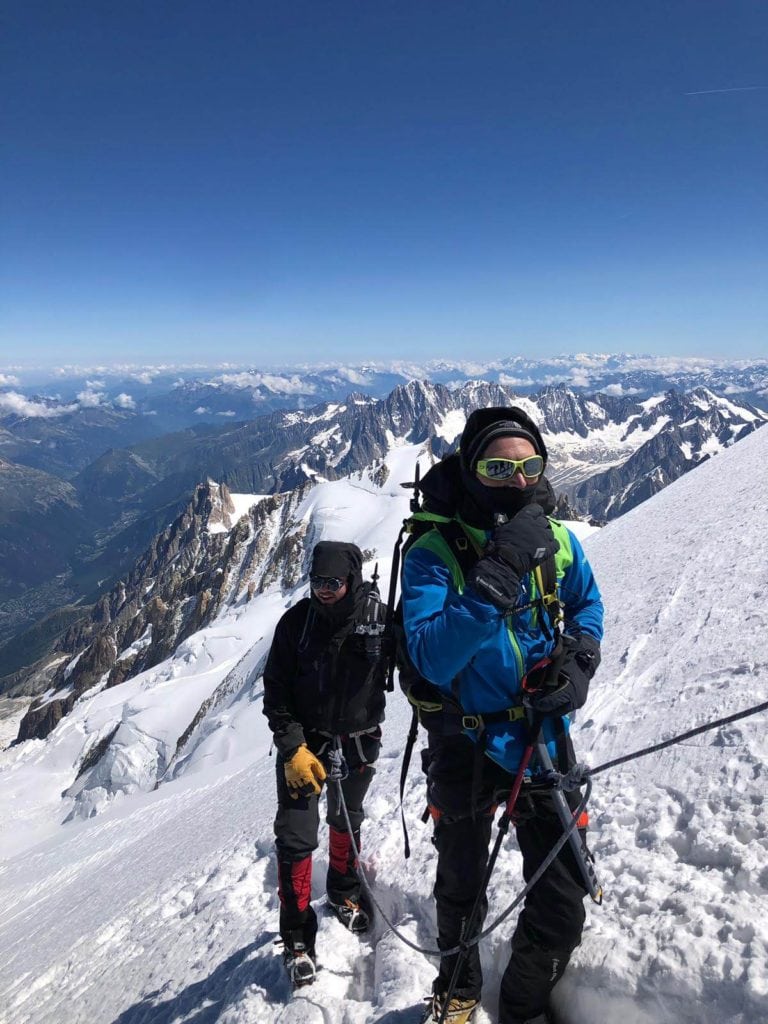
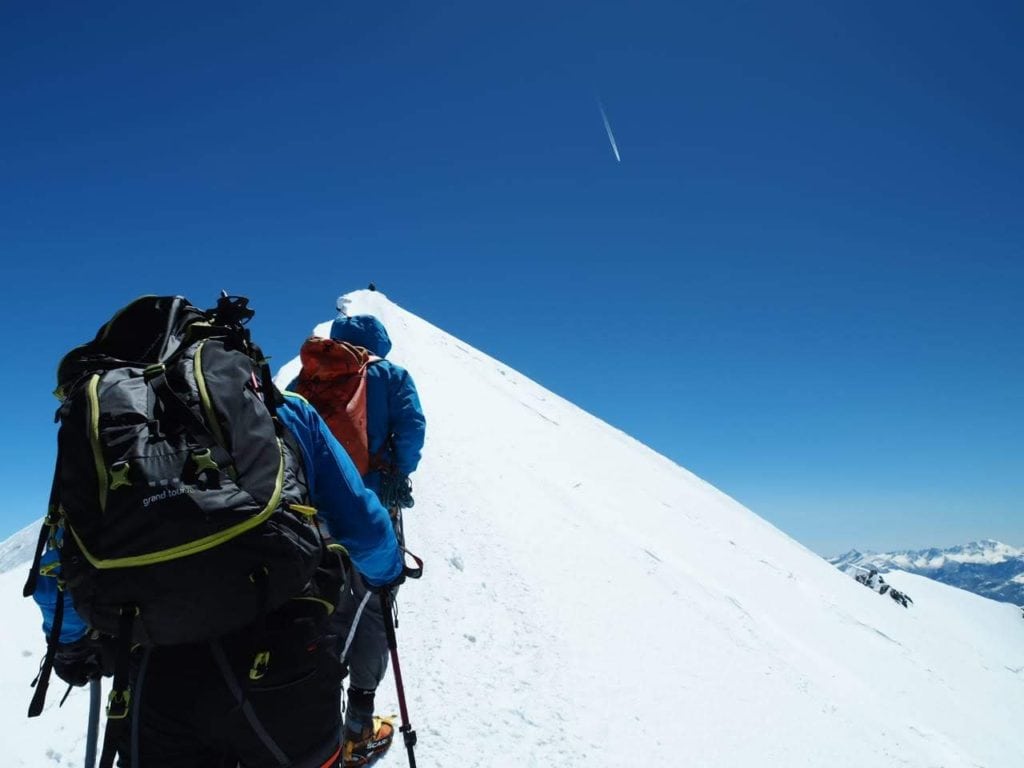


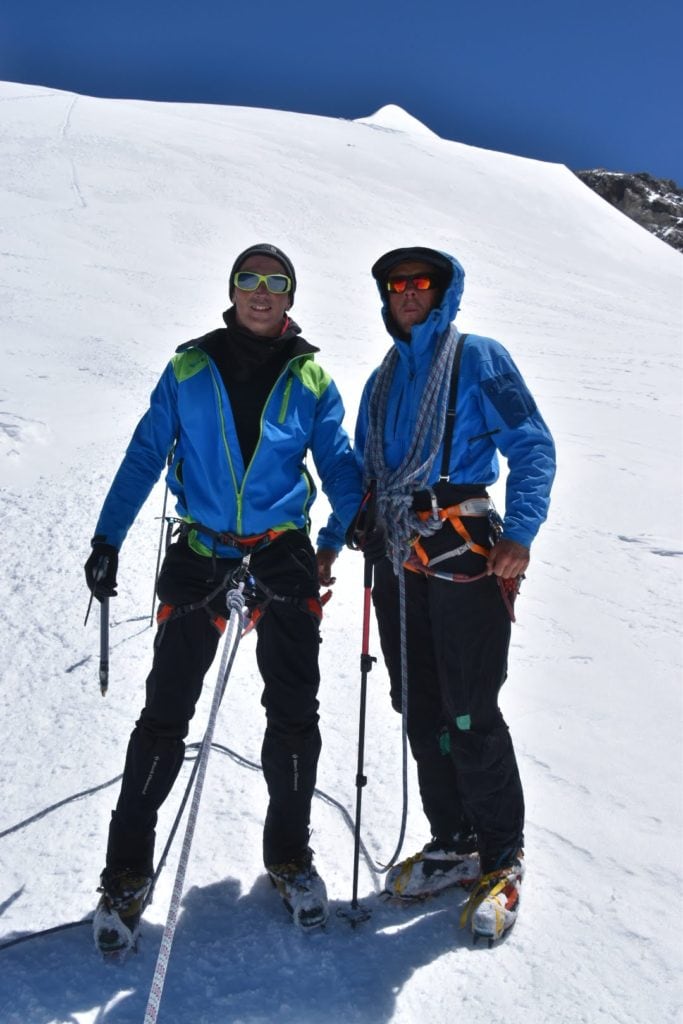

The way down is, of course, a lot easier but still hard and long. The legs are working intensively to get you down while breaking the body, to get down safely. Preventing from falling.
After a few hours of descending, we reach the Refuge du Goûter. Here we will rest and spend the night.

We woke up at 4 am again, this time in order to leave the mountain.
We don’t need the crampons this time on our shoes. The helmet though is a must to get down from the rocky wall with its danger of rocks falling.
Jumping around the wall and stones, getting the support from the fixed cables and we are down back to the dangerous ice section. We put the crampons again and crossing this section. This time it looks more dangerous compared to the previous time when climbing up.

There are many falling rocks that almost hit a group of Russian climbers just when we reached this section. Few deadly rocks fell down right after I crossed this part! Gladly, this is over. After a short hike after it, we are back to the lower hut ( Tête Rousse hut ) for a rest and breakfast before continuing our way down till the train station.
We took the last group picture on the mountain and kept walking.

This was a marvelous adventure, with a great group of people- participants and guides.
Thank you, Doreen, Victoria, Max, Bernardo and Alex for being a great unforgettable group and looking forward to the next adventure with you.
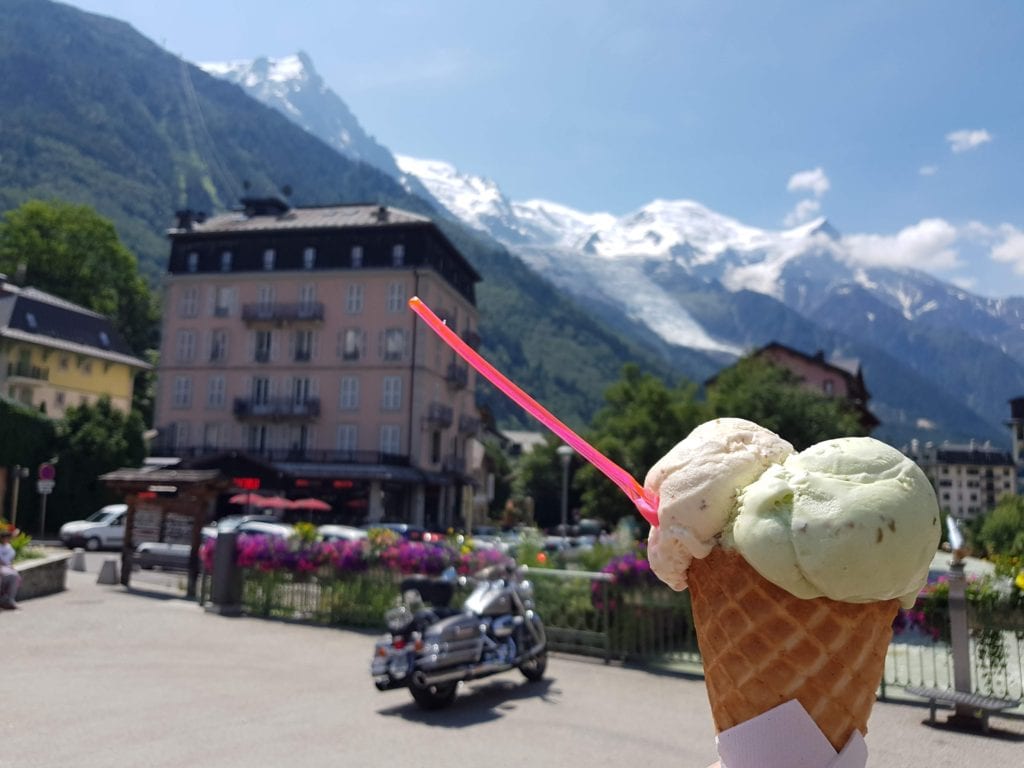
Leave a comment